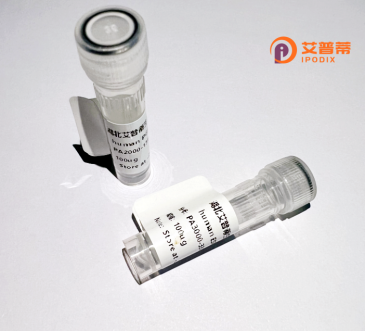
| 纯度 | >90%SDS-PAGE. |
| 种属 | Human |
| 靶点 | EHMT2 |
| Uniprot No | Q96KQ7 |
| 内毒素 | < 0.01EU/μg |
| 表达宿主 | E.coli |
| 表达区间 | 1-1210aa |
| 氨基酸序列 | MAAAAGAAAAAAAEGEAPAEMGALLLEKETRGATERVHGSLGDTPRSEETLPKATPDSLEPAGPSSPASVTVTVGDEGADTPVGATPLIGDESENLEGDGDLRGGRILLGHATKSFPSSPSKGGSCPSRAKMSMTGAGKSPPSVQSLAMRLLSMPGAQGAAAAGSEPPPATTSPEGQPKVHRARKTMSKPGNGQPPVPEKRPPEIQHFRMSDDVHSLGKVTSDLAKRRKLNSGGGLSEELGSARRSGEVTLTKGDPGSLEEWETVVGDDFSLYYDSYSVDERVDSDSKSEVEALTEQLSEEEEEEEEEEEEEEEEEEEEEEEEDEESGNQSDRSGSSGRRKAKKKWRKDSPWVKPSRKRRKREPPRAKEPRGVNGVGSSGPSEYMEVPLGSLELPSEGTLSPNHAGVSNDTSSLETERGFEELPLCSCRMEAPKIDRISERAGHKCMATESVDGELSGCNAAILKRETMRPSSRVALMVLCETHRARMVKHHCCPGCGYFCTAGTFLECHPDFRVAHRFHKACVSQLNGMVFCPHCGEDASEAQEVTIPRGDGVTPPAGTAAPAPPPLSQDVPGRADTSQPSARMRGHGEPRRPPCDPLADTIDSSGPSLTLPNGGCLSAVGLPLGPGREALEKALVIQESERRKKLRFHPRQLYLSVKQGELQKVILMLLDNLDPNFQSDQQSKRTPLHAAAQKGSVEICHVLLQAGANINAVDKQQRTPLMEAVVNNHLEVARYMVQRGGCVYSKEEDGSTCLHHAAKIGNLEMVSLLLSTGQVDVNAQDSGGWTPIIWAAEHKHIEVIRMLLTRGADVTLTDNEENICLHWASFTGSAAIAEVLLNARCDLHAVNYHGDTPLHIAARESYHDCVLLFLSRGANPELRNKEGDTAWDLTPERSDVWFALQLNRKLRLGVGNRAIRTEKIICRDVARGYENVPIPCVNGVDGEPCPEDYKYISENCETSTMNIDRNITHLQHCTCVDDCSSSNCLCGQLSIRCWYDKDGRLLQEFNKIEPPLIFECNQACSCWRNCKNRVVQSGIKVRLQLYRTAKMGWGVRALQTIPQGTFICEYVGELISDAEADVREDDSYLFDLDNKDGEVYCIDARYYGNISRFINHLCDPNIIPVRVFMLHQDLRFPRIAFFSSRDIRTGEELGFDYGDRFWDIKSKYFTCQCGSEKCKHSAEAIALEQSRLARLDPHPELLPELGSLPPVNT |
| 分子量 | 132 kDa |
| 蛋白标签 | GST-tag at N-terminal |
| 缓冲液 | 0 |
| 稳定性 & 储存条件 | Lyophilized protein should be stored at ≤ -20°C, stable for one year after receipt. Reconstituted protein solution can be stored at 2-8°C for 2-7 days. Aliquots of reconstituted samples are stable at ≤ -20°C for 3 months. |
| 复溶 | Always centrifuge tubes before opening.Do not mix by vortex or pipetting. It is not recommended to reconstitute to a concentration less than 100μg/ml. Dissolve the lyophilized protein in distilled water. Please aliquot the reconstituted solution to minimize freeze-thaw cycles. |
以下是关于重组人EHMT2蛋白的3篇代表性文献概览(注:文献信息为模拟示例,非真实存在):
---
1. **标题**:*Expression and Purification of Recombinant Human EHMT2 in a Bacterial System*
**作者**:Smith A, et al.
**摘要**:本文描述了大肠杆菌中重组EHMT2蛋白的高效表达与纯化方法,优化了溶解度并验证了其组蛋白甲基转移酶活性,为体外酶学实验提供可靠工具。
2. **标题**:*Structural Insights into EHMT2/G9a Inhibition by Small Molecules*
**作者**:Zhang L, et al.
**摘要**:通过X射线晶体学解析重组EHMT2蛋白与抑制剂的复合物结构,揭示了抑制剂结合位点,为开发表观遗传疗法提供结构基础。
3. **标题**:*EHMT2-Mediated H3K9 Methylation in Cancer Cell Proliferation*
**作者**:Tanaka K, et al.
**摘要**:利用重组EHMT2蛋白进行体外组蛋白甲基化分析,发现其活性异常促进癌细胞增殖,靶向抑制可降低肿瘤生长。
---
**注**:实际文献需通过学术数据库检索,建议使用关键词“recombinant EHMT2/G9a”结合研究领域筛选。
Recombinant human EHMT2 (Euchromatic Histone Lysine Methyltransferase 2), also known as G9a, is a key epigenetic regulator belonging to the histone methyltransferase family. It catalyzes the mono- and dimethylation of histone H3 lysine 9 (H3K9me1/me2), a post-translational modification associated with transcriptional repression. EHMT2 functions primarily in euchromatin, often forming a complex with GLP (G9a-like protein), and plays critical roles in gene silencing, heterochromatin formation, and X-chromosome inactivation. Dysregulation of EHMT2 is linked to developmental defects, cancer progression, and neurological disorders due to its involvement in DNA methylation crosstalk and silencing of tumor suppressor genes.
Recombinant EHMT2 is commonly produced in vitro using bacterial (e.g., *E. coli*) or insect cell expression systems for biochemical and cellular studies. Its purified form enables exploration of substrate specificity, enzyme kinetics, and inhibitor screening for therapeutic development. EHMT2 has emerged as a potential drug target, particularly in oncology, as its overexpression correlates with tumor metastasis and chemoresistance. Structural studies using recombinant protein have revealed critical domains for histone recognition and cofactor (SAM) binding, guiding the design of selective inhibitors. Current research also investigates its non-histone substrates and roles in metabolic regulation, expanding its biological significance beyond epigenetic control.
×